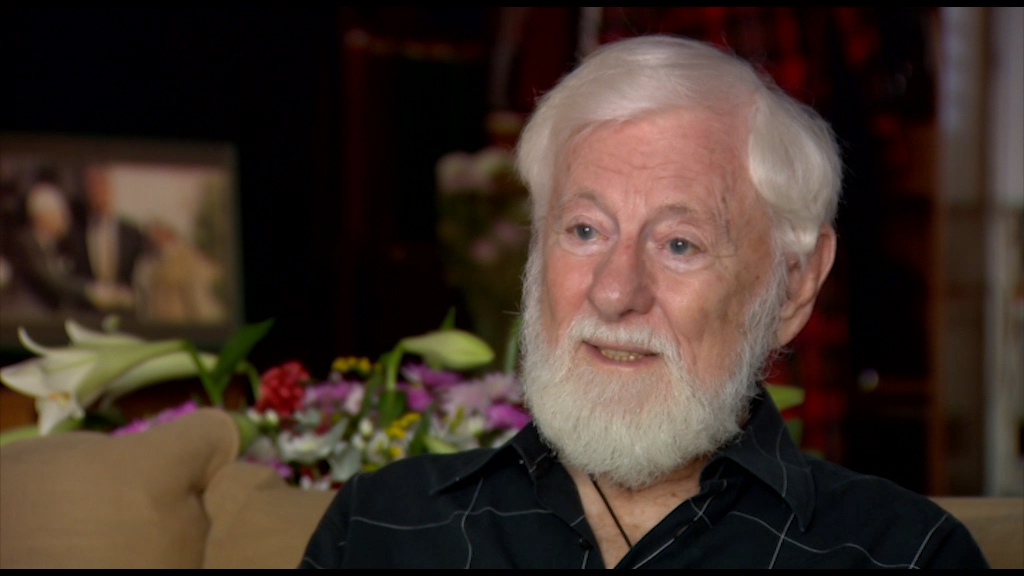NEXT STORY

Uprising of the Mizrachi Jews
RELATED STORIES

NEXT STORY

Uprising of the Mizrachi Jews
RELATED STORIES


|
Views | Duration | |
|---|---|---|---|
| 61. Saving Haaretz from closure | 13 | 02:26 | |
| 62. Running HaOlam HaZeh on a shoestring budget | 15 | 03:53 | |
| 63. My book brings me fame | 11 | 03:08 | |
| 64. Naked girls in, Ben-Gurion out | 18 | 03:51 | |
| 65. I invented the back cover | 15 | 02:49 | |
| 66. Photography was an integral part of the magazine | 13 | 03:11 | |
| 67. HaOlam HaZeh v. IDF and the Establishment | 13 | 04:53 | |
| 68. The ethnic demon | 14 | 03:16 | |
| 69. Uprising of the Mizrachi Jews | 15 | 03:09 | |
| 70. Who is the real enemy? | 17 | 03:01 |


There was a problem in Israel which no one talked about, which was later called the 'ethnic demon'. No one talked about it. I was familiar with this problem because I had stayed in contact with my soldiers, those who had remained in Israel. Gradually everyone had emigrated. They came to visit me all the time that they were in the country. And we saw the transit camps and saw what was happening and it really annoyed me, upset me very much. In 1954, we decided to start a campaign about this issue, a journalistic campaign, which at that time was also something new in journalism. A campaign. And we published an entire series entitled Screwing the Blacks. The response was terrible. There was outrage from wall to wall, 'the incitement from HaOlam HaZeh, this inciting newspaper is creating a problem that doesn't exist, inventing things to slander the government', and so on and so forth. We went to the transit camps. I remember a flood in 1951, a real flood throughout the whole country. There was major flooding in the Tel Aviv area, Chiriya, Or Yehuda, where there were big transit camps. The camps sank into the mud. We went to visit and what we saw was happening really angered us. Also, all the transit camps were full of what today are called Mizrahi. Why? There was mass immigration and no fewer people came from Eastern Europe than from the Arab countries. Somehow the Romanians, the Poles, all of them somehow organised themselves within a few months. They had relatives who helped them, they had acquaintances. Somehow the transit camps emptied of all the Ashkenazi Jews and only the Mizrahi remained.
הייתה בעיה בארץ שלא דיברו עליה, מה שנקרא אחר-כך "השד העדתי”. לא דיברו על זה. אני הייתי קרוב לבעייה הזאת, מפני שנשארתי במגע עם החיילים שלי, אלה שנשארו בארץ. לאט-לאט כולם היגרו. באו לבקר אותי כל זמן שהיו בארץ. והיינו במעברות וראינו מה קורה וזה די הרגיז אותי, הרגיז אותי אפילו מאוד. וב-1954 החלטנו לפתוח בקמפיין בעניין הזה, קמפיין עיתונאי, שאז גם כן היה דבר חדש בעיתונות. קמפיין. ופרסמנו סדרה שלמה תחת הכותרת "דופקים את השחורים". התגובה הייתה איומה. זעקה מקיר אל קיר: "המסית הזה, 'העולם הזה', העיתון הזה המסית יוצר בעיה שלא קיימת, ממציא דברים בשביל להשמיץ את הממשלה", וכו', וכו', וכו'. אנחנו היינו במעברות. אני זוכר היה מבול ב-1951, משהו כזה, היה מבול ממש, בכל הארץ. היו הצפות גדולות באזור תל אביב, חיריה, אור יהודה, איפה שהיו המעברות הגדולות. המעברות שקעו בבוץ. הלכנו לבקר, וזה ממש הרגיז אותנו מה שקורה. מה גם, שכל המעברות היו מלאות במה שנקרא היום "מזרחיים". למה? הרי העלייה הייתה המונית ובאו לא פחות אנשים ממזרח אירופה מאשר מארצות ערב. איכשהו הרומנים, הפולנים, כל אלה שבאו, איכשהו הסתדרו אחרי כמה חודשים. היו להם קרובים שעזרו להם, היו להם מכרים. איכשהו המעברות התרוקנו מהאשכנזים ונשארו רק המזרחיים.
Uri Avnery (1923-2018) was an Israeli writer, journalist and founder of the Gush Shalom peace movement. As a teenager, he joined the Zionist paramilitary group, Irgun. Later, Avnery was elected to the Knesset from 1965 to 1974 and from 1979 to 1981. He was also the editor-in-chief of the weekly news magazine, 'HaOlam HaZeh' from 1950 until it closed in 1993. He famously crossed the lines during the Siege of Beirut to meet Yasser Arafat on 3 July 1982, the first time the Palestinian leader ever met with an Israeli. Avnery was the author of several books about the Israeli-Palestinian conflict, including '1948: A Soldier's Tale, the Bloody Road to Jerusalem' (2008); 'Israel's Vicious Circle' (2008); and 'My Friend, the Enemy' (1986).
Title: The ethnic demon
Listeners: Anat Saragusti
Anat Saragusti is a film-maker, book editor and a freelance journalist and writer. She was a senior staff member at the weekly news magazine Ha'olam Hazeh, where she was prominent in covering major events in Israel. Uri Avnery was the publisher and chief editor of the Magazine, and Saragusti worked closely with him for over a decade. With the closing of Ha'olam Hazeh in 1993, Anat Saragusti joined the group that established TV Channel 2 News Company and was appointed as its reporter in Gaza. She later became the chief editor of the evening news bulletin. Concurrently, she studied law and gained a Master's degree from Tel Aviv University.
Tags: Screwing the Blacks, Or Yehuda
Duration: 3 minutes, 16 seconds
Date story recorded: October 2015
Date story went live: 10 March 2017